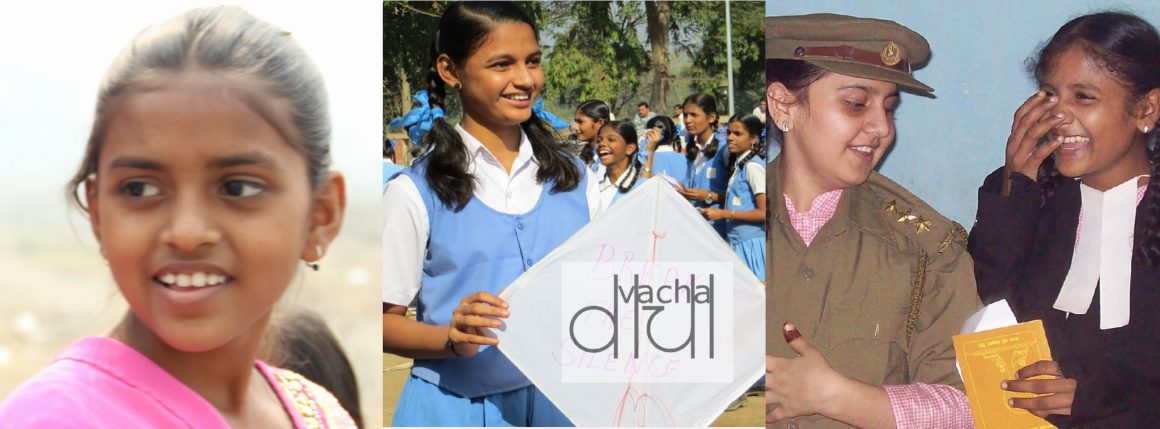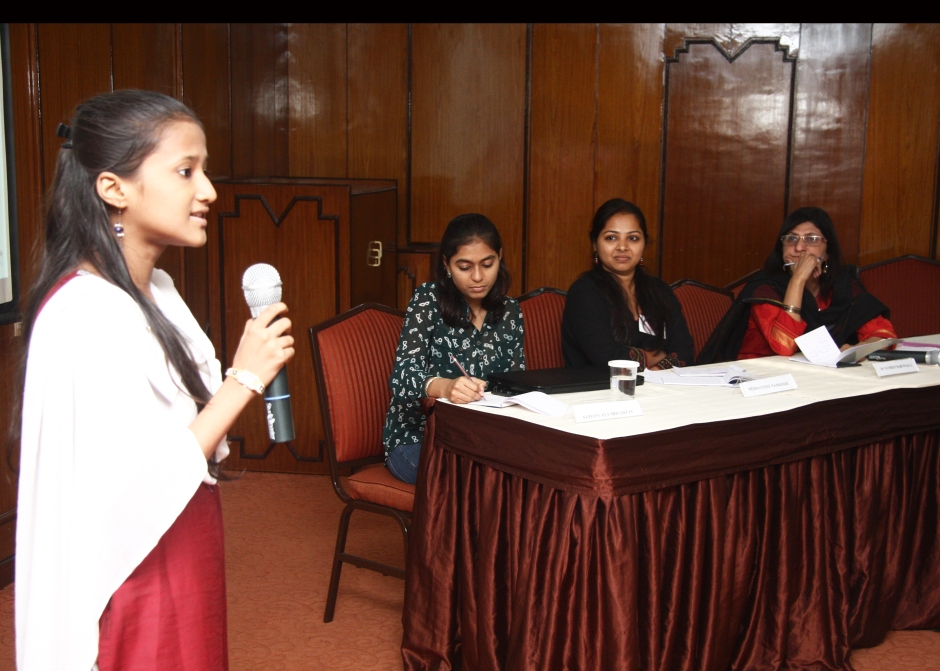Story by Mahima Dev
Story based on Sabah Wajid Ali Siddiqui, 19 years old, First Year BAF at MVM College
While interning at Vacha Resource Centre for Women and Girls, I came across a girl named Sabah. I was impressed by her confidence and gumption, she was never hesitant to put forth her view. I was surprised to learn that she was the same age as I am. She has been with Vacha for 9 years now. Just goes to show how a girl’s strong will and a little external push can create great outcomes. Here is Sabah’s story-

A timid smile and resolute voice, Sabah’s personality intrigues you instantaneously. She speaks with striking confidence about her journey. Her ambition acts as the source of her morale, never mind that resources and odds are not exactly in her favour. She soldiers on. Her latest achievement is a research paper on “The Role and Contribution of Small and Medium Enterprises in the Indian Economy” which was published by her college.
At first Sabah found it hard to cope in a college environment. If being a girl of newfound adulthood wasn’t already complex enough, she was suddenly amidst fluent English speakers. Up until the tenth grade Sabah had studied in an Urdu medium school. She was usually the outspoken girl at her old school, but found herself terribly quiet here. She was perplexed as this was all she ever wanted- going to college, pursuing a Bachelors in Accounting and Finance degree. In fact she was already the most qualified person in her nine-member family. What’s more, she’d even received the Shadhika scholarship. What she hadn’t accounted for though, was the language barrier.

After a few days and many awkward attempts at spoken English, she realised that although she was weak at English, no one, not even the teachers could speak Hindi as fluently as herself. Her grasp over economic theory and accounting too, was good. She cinched the opportunity with a speech and dazzled her teachers and classmates alike. That day she knew that she was in no way inferior, all she had to do was muster her courage and play to her strengths.
With her nascent confidence, she was determined to keep her winning streak going. She had heard, in the passing, about a study that her college was about to publish on “SMEs.” She wondered what they were. Abbreviations have always confused her, she turned to her most credible source- Google. This too, was only accessible to her at her college laboratory and at the Vacha resource centre. When she hit ‘search’ she was introduced to a new world that seemed both intriguing and elusive in parts. She delved deeper into the realm of Small and Medium industries in India. She walked through definition, marched through advantages, darted through importance and danced through economic impact. Her mind was aflame- she wanted to know more.

Sabah pulled out all stops, she elicited every source possible- teachers, mentors, family, and the ever helpful internet. Many weeks went into it. She even sacrificed a few of her beloved accounts lectures in college to gain practical knowledge outside. She says, “Research and application gave me a much deeper insight into economics and clarified many concepts on GDP. I have learned new words in English also. I think everyone should learn from books first and then apply in real life to fully understand subjects.” Many a time she found her near and dear ones concerned about her. ”Are you mad spending so much time in all this and missing classes too? The teacher said this was co-curricular, that means no marks for all this. Better forget it”, said a classmate. But Sabah knew better. She told her classmate that although the teacher would not award extra marks for her research, she would surely do better on her exams because of it. She toiled on, asking her teachers more and more questions each day. Crunching numbers and data was what she looked forward to the most every day. Because “at the end of the hard work when I get a clear conclusion, it makes me very happy.”
Finally, Sabah turned in her research to her teacher. It was a file that read “Role and Contribution of SMEs in Indian Economy.” Sabah beamed with contentment and pride as she handed it over. A few days later, her teacher asked her to wait back after class. “Sabah, the principal loved your thesis. It has been selected for the college publication. In the interest of the college students, we would love for you to present your thesis at the conference next month,” the teacher said. These words seemed like the sweetest song to Sabah. Her committed effort had finally borne fruit. In the next moment, it dawned on Sabah that she would have now to present her research to an auditorium full of students, teachers, dignitaries and international experts- in English! But she had never let anxiety and nervousness hold her back in life, and she was not going to start now. So she smiled and said, “Sure, madam.”

The conference day arrived quickly. Sabah had practised relentlessly, yet some nervousness remained, it was her first big address. The event started with the keynote speech by Mr. Vincent Wahrenburg, Head of Environmental Engineering, IRIANS, Berlin and a wonderful address by Mr. Chandrakant Salunkhe, Founder and President, SME Chambers of India. Next up was Sabah. She explained her thesis from beginning to end, about the importance of government support to SMEs, micro scale innovation, women entrepreneurs, and challenges in employment growth with proposed solutions. She ended on a beautiful note, “We must encourage girls to study and run their own small businesses, just like they run their households.” The content made up for any shortcomings in her linguistics. Everyone appreciated her presentation and signature confidence. Mr. Wahrenburg, congratulated her personally.
This experience has been unforgettable for Sabah, she cannot wait to start research for her next presentation. She says, “I love presenting to people because I want my voice to be heard by many. I want to become a lecturer in accounting and economics someday.”

